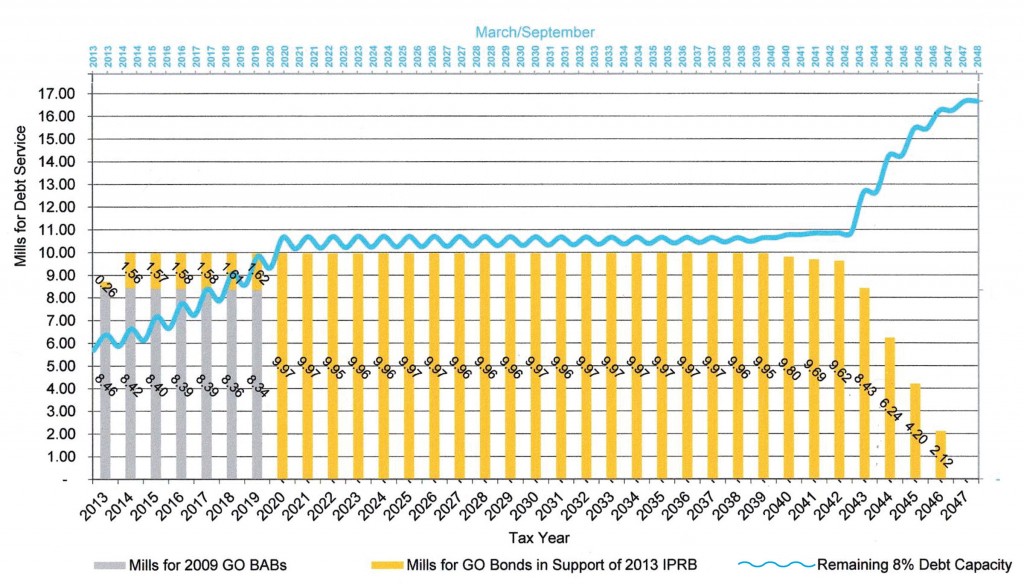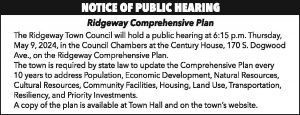County to Review $24.06M Mechanics
WINNSBORO – Fairfield County Administrator Milton Pope plans to make good Monday evening on his promise to explain the County’s newest general obligation (GO) bond, issued by Council on Aug. 7 for $1,156,000. That explanation is expected to also include a GO bond issued on Feb. 14 for $769,177.88, the $24 million bonds ($3,710 SeriesA & $20,980,000 Series 2013B) issued in April 2013 and clarification as to how many more GO bonds Council plans to issue over the next 30 or so years to finance the semi-annual installment payments due to the Fairfield Facilities Corporation (FFC) to pay off the 2013 $24 million bonds.
Council’s critics say Council has not provided an honest and thorough explanation of the bonds except to say (1) the bonds will not increase residents’ property taxes, (2) the 2013 plan set in motion by the Council to finance a $24 million economic development plan with bonds was intended (by Council) to obligate the new revenue from V.C. Summer’s Units II and III reactors so as to possibly protect the County from other governments in the state that might threaten to raid that revenue in the future and (3) that the media has stirred up misconceptions about the bonds.
Council Chairman David Ferguson further propagated the perception of secrecy on the part of Council when he told The Voice at an Aug. 18 meeting with the Legislative Delegation that he didn’t know how the County plans to spend the proceeds from the $1,156,000 bond. This, combined with false and misleading information provided by the former County Administrator to the public and local newspapers as to which bonds, exactly, the County did or did not issue in 2013 as well as the repercussion of those bonds on the issuance of future GO bonds, has raised questions and suspicion from the county’s citizenry.
Why are the GO Bonds Being Issued?
According to the $24 million bond documents, Council’s initial plan, in 2013, though it was not explained to the public at that time, was to begin issuing GO bonds in early 2014 to make the semi-annual installment payments on the $24 million bonds from 2013 until 2020 (part of the bond issued on Feb. 14 was to reimburse the County’s general fund for the Sept. 1, 2013 installment payment). According to the bond documents, the County planned to begin making the larger installment payments from surplus revenue in 2021. Surplus revenue is a term in the $24 million bond documents that refers specifically to that revenue that will be produced by the two new V.C. Summer nuclear reactors, which are currently under construction.
When the $24 million bond was issued in 2013, Council expected the surplus revenue to materialize in 2019. Because of delays in construction of units II and III, that revenue is now not expected to start rolling in until late 2020 or early 2021.
In recent weeks, several conflicting documents have surfaced indicating that the County may have changed some aspects of its payment schedule to the FFC. In one document (See Document B), the numbers line up so perfectly as to indicate the proceeds from the $1,156,000 bond would be used to pay off the principal of that same bond and for nothing else. Pope has not yet responded to inquiries by The Voice asking him to confirm or deny this possibility.
Another newly released flow chart (see Document C) appears to forecast a 10 mills debt service for the County from 2020 through 2043 to make installment payments on the $24 million bonds. That debt service millage continues in decreasing amounts until 2047. This would indicate that the County’s taxpayers could be paying as much as $1.3 million in debt service millage (already being collected) on the semi-annual GO bonds each year for 22 years and lesser amounts the following four years for a total of about $30 million.
How did the County get so Deeply in Debt?
In 2013, Council members wanted, but could not afford, to finance a $24 million economic development program that would construct, renovate, etc., “certain projects (2013 Projects) to be used by the County on real property (2013 Real Property) owned or to be acquired by the County.” Pope, who was not employed with the County when the bonds were issued, now says that plan was an effort to possibly protect the new V.C. Summer revenues from being raided in the future by other governments in the state.
Without discussion or explanation to the public as to how the bonds were going to be issued or paid for, however, Council passed a resolution on March 25, 2013, that legally allowed it to create the Fairfield Facilities Corporation, a non-profit shell corporation that could issue an unorthodox Installment Purchase Revenue Bond (IPRB) in the amount of $24 million without being constrained by standard legal regulations and safeguards designed to keep county and municipal governments from over-borrowing.
One thing that makes the IPRB bonds unorthodox is the source of revenue with which they can be repaid. While standard revenue bonds are to be paid from a revenue stream such as a government owned toll road, water plant or other legitimate revenue stream (which Fairfield County does not have), the IPRB’s can be paid off with virtually any revenue source available to the County. While GO bonds do not qualify as a revenue stream for standard revenue bonds, they are an approved revenue stream for paying off IPRB’s.
Details, Details
While the resolution that created the FFC appeared on Council’s agenda on March 25, 2013 (resolutions require only one reading), and was passed by Council in a public meeting that night, there was no explanation by Council or then Administrator Phil Hinely as to any ramifications of the resolution. A digital recording of that meeting confirms that the resolution was neither discussed nor explained in public. Instead, Ferguson read only the title of the resolution: “To provide authorization for an installment purchase plan of finance for certain capital projects in the county and other related matters.” And with that, the FFC and the subsequent $24 million bond were launched so discretely that not even the newspaper reporters in the room noticed or reported it to the public.
On April 12, 2013, three men in the County who had been asked by Hinely to serve as volunteer members of the FFC board of directors signed a resolution to issue the $24 million IPRB bonds. One of those members, Bob Drake, told The Voice that the board never met, that the bond was never explained to him nor was he made aware that a multiple number of GO bonds would follow to help pay off the $24 million bonds.
“Signing that resolution was our one and only job,” Drake, a local banker, said.
Shortly thereafter, on or about April 29, 2013, the newly created FFC quietly issued two bonds totaling $24 million to fund the Council’s economic development projects. Pope recently clarified in an email to The Voice that it was the FFC, not the County, that actually borrowed the $24 million, making it the FFC’s debt, not the County’s. The debt itself is unique as well. While the debt belongs to the FFC and not the County, the FFC is a shell corporation with, according to the bond document, no operating history and no assets except for the interest it acquired in the County’s projects when they were conveyed to the FFC to be constructed/renovated. While the County is not obligated to use GO bonds to make the semi-annual installment payments to the FFC, it is obligated to use a portion of the surplus revenue to make those payments that are then used by the FFC to pay off the $24 million bond debt.
What if the County defaulted on those payments? A surety deposit and an insurance policy paid for with the bond proceeds offer temporary assistance. A Columbia bond attorney, who asked not to be identified, said the Council would have a couple of other options to raise funds for the installment payments in the event of default. It could either ask voters to pony up with a GO bond that would increase property taxes on those properties in Fairfield County that do not pay a fee in lieu of taxes or it could do nothing and lose its bond rating. There would be few other repercussions except that the County could also lose some of the projects that were funded by the $24 million bonds in the first place.
Raising Funds to Pay Off Debt
According to the bond document, Council’s $24 million IPRB was enabled by the County signing an agreement with the FFC that set up a convoluted, circuitous payment/leasing plan that would have been difficult for the Council members to explain to the public had they even tried, although there is no evidence that they did try.
The agreement between the County and the FFC involves 2013 Projects (those projects of construction/renovation to be paid for with the $24 million bonds) and 2013 Real Property (those facilities that already exist on the properties where construction/renovation will occur). In the agreement between the County and the FFC, Council, in exchange for a small fee from the FFC, leased to the FCC “the land on which the 2013 Projects are or will be located (which consists of sites presently owned by the County) and the 2013 Real Properties.” The FFC will then use the proceeds from the $24 million bonds to construct/renovate, etc., the 2013 Projects for the County and, for its part, the County, incrementally purchases the 2013 Real Property and the 2013 Projects back from the FCC over the life of the bond by making semi-annual installment payments to the FFC “in amounts calculated to be sufficient to enable the FFC to pay the principal and interest,” as stated in the bond, on the $24 million bonds as well as any other payments agreed to by the parties.
The only clue that Council planned to unleash years of semi-annual GO bonds on the county was an unheralded listing on the County Council’s agenda in the first paragraph of Ordinance 614 that provided for the bonds and that was voted on at three council meetings: March 25, April 8 and April 15, 2013. The first paragraph was read aloud at a brief public hearing on April 8, 2013: “Providing for the issuance of, not exceeding, in the aggregate, the County’s constitutional bonded debt limit in general obligation bonds, in one or more series, tax-exempt or taxable, to be used to fund one or more capital projects; authorizing the County Administrator to prescribe the form and details of the bonds; providing for the payment of the bonds; providing for the borrowing in anticipation of the issuance of the bonds; providing for the disposition of property related to the bonds; providing for the distribution and pledge of certain revenues related to certain capital projects in the county; and other related matters.”
There is no indication that copies of Ordinance 614 were provided to reporters and other members of the public at the meeting and it was not posted on the County’s website.
Both county newspapers reported that Council voted 4-1 in favor of the ordinance (councilmen Kamau Marcharia and David Brown were absent) with Councilwoman Carolyn Robinson being the lone nay vote. Robinson complained that there were things in the bond that the whole Council had never discussed. She complained further that the ordinance had been dictated to the Council by a few members.
The passing of Ordinance 614 paved the way for Council to issue any number of GO bonds in any amount in the future without voter approval so long as it did not exceed the County’s bonded debt limit, which is 8 percent of the assessed value of County property. That amount as of March 1, 2013 was approximately $4.5 million. The County would make semi-annual installment payments to the FFC from 2013 through 2043 for a total amount, including interest, of $43 million. The FFC, in turn, agreed to use those installment payments to pay off the $24 million bonds. To make these payments to the FFC, the County agreed to use two sources of revenue: (1) proceeds from GO bonds issued by Council and (2) a portion of the special revenue (when it materialized) from units II and III.
Citizens’ Committee
At Council’s Sept. 8 meeting, Councilwoman Mary Lynn Kinley staunchly refuted complaints from the audience that citizens had not had input into the $24 million bond process, saying, “We had a citizen committee to sit in and listen to that before anything was decided. We have never done anything up here without public input.”
The Voice sent Kinley an email the following day asking for names of the members of that citizens’ committee as well as when they met, how, when and by whom they were appointed, what their role was in the bond process and any documentation regarding their input. Kinley replied, asking that The Voice request that information directly from the County (Pope).
“From what I recall,” Kinley added, “there were no minutes required by law for this group when they met. It was actually not a ‘committee.’ They were a group selected to do a specific job with the bond.”
In a follow up email, Pope wrote that, after a conversation with Kinley, he believed that she was referring to the ‘citizens’ on the FFC board of directors. The Voice contacted Drake, who confirmed that, as a board member, he never met or had any input whatsoever into the bond or the bond process other than to sign a few pieces of paperwork on April 12, 2013, that were emailed to him and picked up by a courier.
“The signing of those papers was really a formality,” Drake said, “I was not involved with the bond process at all and never had any conversations with the Council about it.”
County Administrator Milton Pope is scheduled to make a presentation about the bonds at the regular Council meeting on Monday, Sept. 22 in Council chambers.











